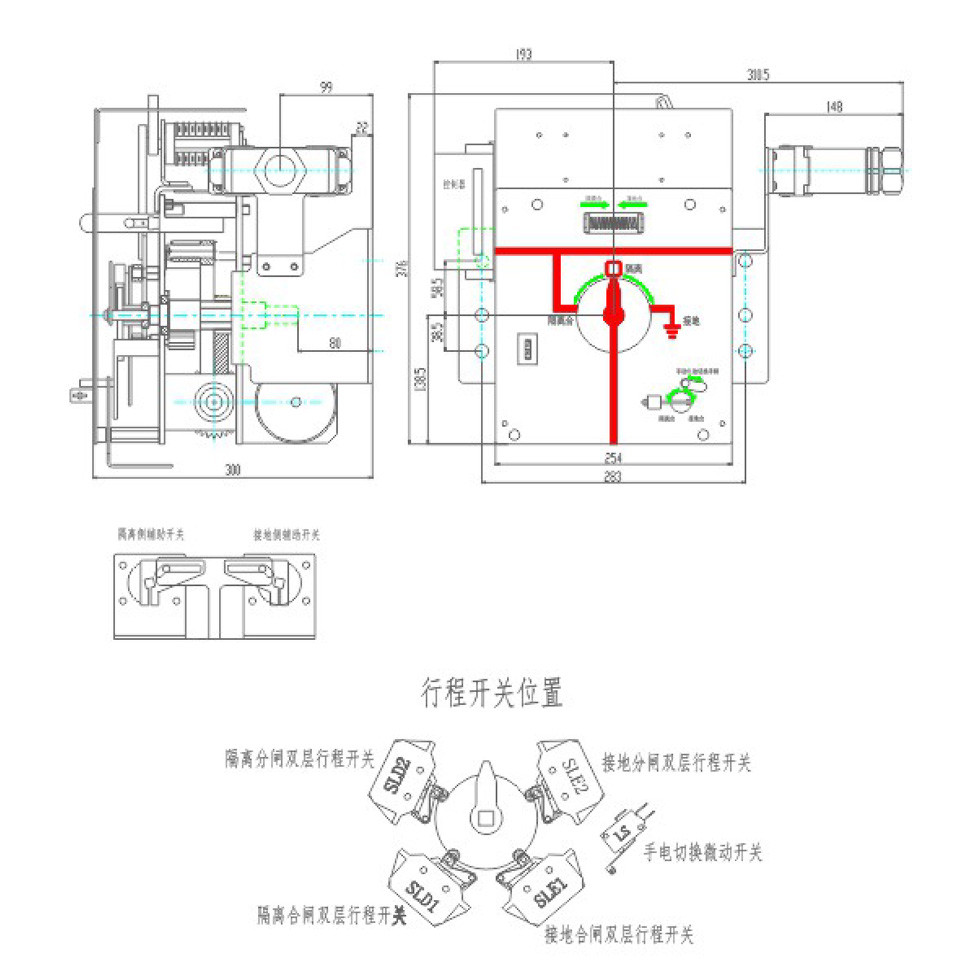CJ30G electric operating mechanism can be used for closing and breaking HGIS-12, HGIS-40.5 switchgear and isolation switches, grounding switches and load switches with equivalent torque. This mechanism is a three-station mechanism, which can operate the isolation switch and the grounding switch, and realize the functions of the isolation switch closing, opening and the grounding switch closing and opening. The mechanism has two operation modes at the same time: manual and electric. The mechanism adopts turbine and worm transmission, and the output torque is large. This mechanism is a single-motor three-station mechanism, small and exquisite, which can realize the mechanical and electrical interlocking with the circuit breaker, and the interlocking of the isolation switch and the grounding switch. When manual, the handle can only be inserted or withdrawn when in place. The mechanism also has a counter.
The output angle of this mechanism is 60°-85° optional
2. Output torque< 120N·m
3. The rated voltage dividing and closing time <8s
4. Technical parameters of energy storage motor (can be customized according to user requirements).
|
Model |
HDZ-23603 type |
|
Rated operating voltage |
≈220V-110V |
|
Rated output power of the motor |
160W |
|
Normal operating voltage range |
85%-110% |
5. Use CSK type magnetic blow switch. The current that can be continuously passed through the contact is 10A at AC220V and 3A at DC220V.
6. Use magnetic blowing switch to ensure the output of auxiliary signal. In general, the isolation and subdivision signal is 8 open and 8 closed, and the grounding merging signal is 8 open and 8 closed.
7. Industrial couplings or terminal blocks for secondary output, there are several kinds of terminal blocks such as single-layer, double-layer, three-layer, etc., and there are 24-pin, 32-pin, 46-pin and so on for secondary industrial connectors.









